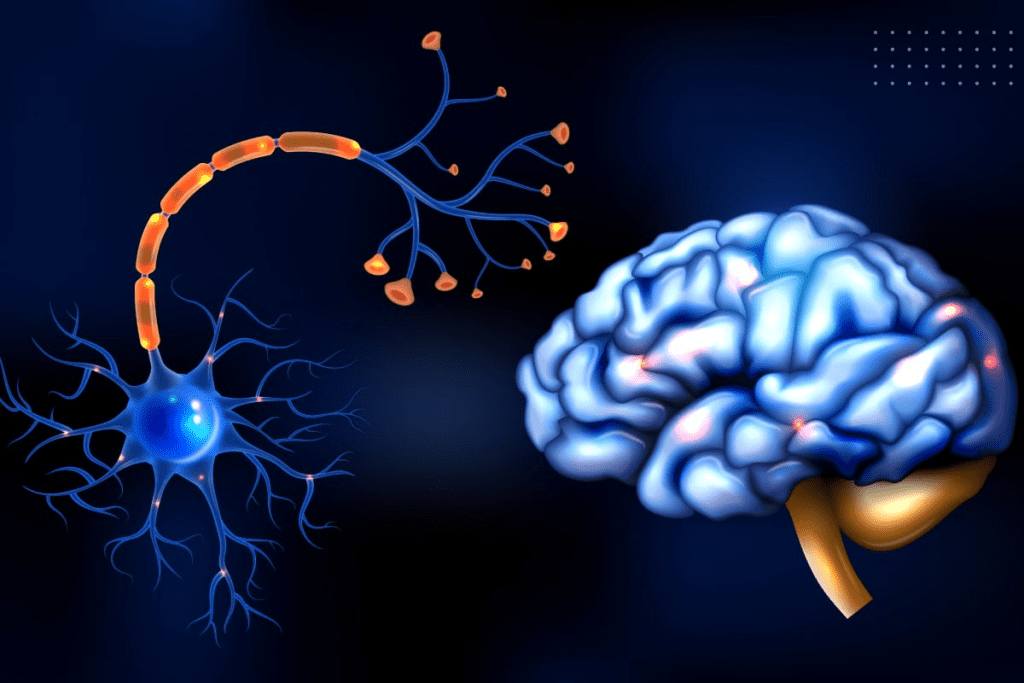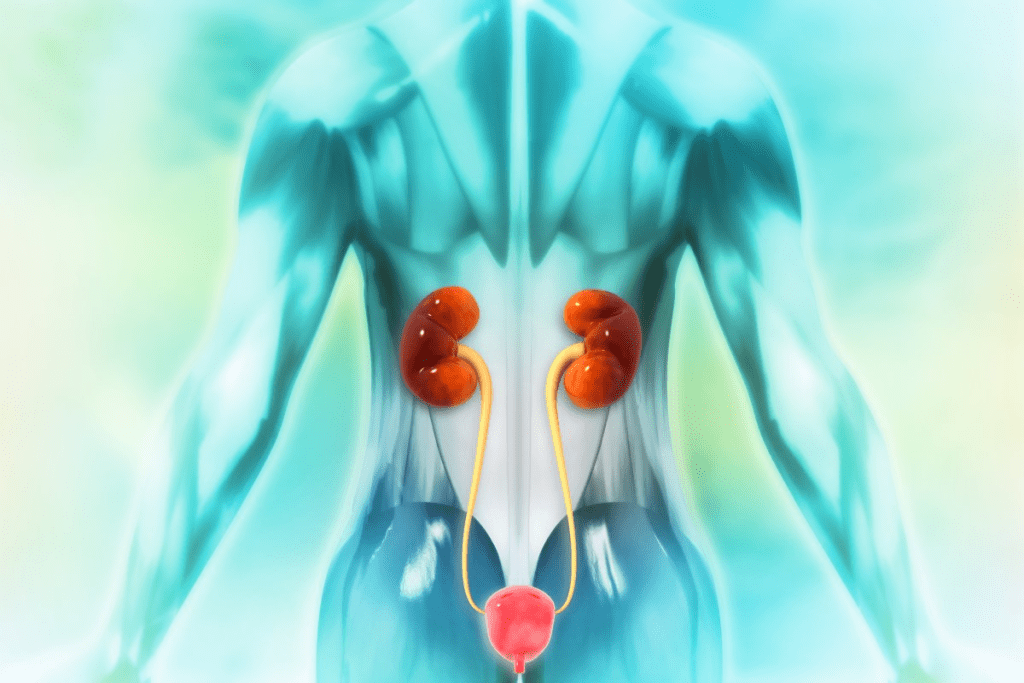Last Updated on November 24, 2025 by

Urinary control is a complex process. It relies heavily on the neurological system. This system involves circuits between the brain, spinal cord, and nerves. What does the neurological system have to do with urinary control? Learn why this link is crucial to hypotonic conditions. Powerful facts about nerve signals.
The muscles and nerves of the urinary system work together. They help hold and release urine at the right time. Nerves carry messages between the bladder and the spinal cord and brain. This enables voluntary control over urination.
Any disruption in this system can lead to urinary incontinence. Conditions like spinal cord injuries, multiple sclerosis, and Parkinson’s disease can affect it. This results in a neurogenic bladder.
The brain and bladder talk to each other through a complex network of nerves. This network helps control when we pee. It makes sure we can hold our urine until we’re ready to go.
The process of peeing needs the bladder and urethral sphincters to work properly. The brain controls these with the help of the nervous system. The brain’s front part and the brainstem, including the pontine micturition center, are key to starting or stopping urination.
A study in a well-known journal shows how important these paths are for keeping control over pee in neurological health.

The pontine micturition center is key in controlling when we pee. It connects the brain to the spinal cord. It helps the bladder muscle and the urethral sphincter work properly.
This center is vital for making sure we pee at the right time and do it well.
The bladder and urethra work together thanks to a complex network of nerves. This system makes sure urine is stored and released at the right time. It uses both autonomic and somatic pathways.
The detrusor muscle is key in storing and releasing urine. It gets signals from both parasympathetic and sympathetic nerves. Parasympathetic nerves make it contract, letting urine out. Sympathetic nerves relax it, helping the bladder fill up.
The urethral sphincter has two parts: internal and external. The internal part is smooth muscle, controlled by autonomic nerves. The external part is skeletal muscle, controlled by somatic nerves. This allows us to choose when to release urine.

The bladder’s function is controlled by both the autonomic nervous system and the somatic nervous system. The autonomic nervous system handles actions we can’t control. The somatic nervous system is for actions we can control.
Urination has two phases: storing urine and releasing it. In the storing phase, the sympathetic nervous system helps keep urine in by relaxing the bladder muscle and tightening the urethral sphincter.
The sympathetic nervous system helps keep the bladder full by stopping the bladder muscle from contracting.
On the other hand, the parasympathetic nervous system helps release urine by making the bladder muscle contract.
The somatic nervous system controls the external urethral sphincter. This allows us to choose when to let urine out or hold it in.
The journey to mastering urinary control in humans is complex. It involves neural maturation. As we grow, our ability to control when we pee gets better.
Neural maturation is key to mastering bladder control. It’s about the growth of neural pathways that help our bladder work properly.
Our kidneys make almost 1.5 liters of urine every day. The bladder must hold this urine until it’s time to pee. Neural maturation helps our bladder fill, store, and empty properly.
Problems with these pathways can cause issues like incontinence.
Learning to control urine happens at different times in life. Babies can’t control their bladder, but toddlers start to as their brain connections grow.
Knowing these milestones helps us spot problems early in urinary control.
When the brain’s control over the bladder is disrupted, hypotonic bladder dysfunction can occur. This leads to weak bladder muscles and poor bladder contractions. It can cause urine to stay in the bladder or not empty fully.
A flaccid bladder happens when the bladder muscle weakens and can’t contract well. This often results in urine retention. It’s usually linked to nerve damage or diseases affecting bladder control.
The brain’s front part and brainstem, including the pontine micturition center, are key to bladder control. Damage here can cause a hypotonic bladder or other bladder issues.
Damage to bladder nerves can cause a hypertonic bladder. This is often due to:
These conditions disrupt brain-bladder communication. This leads to weak bladder muscles. Knowing these causes helps in finding the right treatments.
Detrusor sphincter dyssynergia, where the urethral sphincter contracts involuntarily, is also linked to nerve damage. It affects bladder control.
Understanding reflexive and spastic bladder conditions is key. They affect how the bladder works, leading to problems like involuntary contractions and spasms. These issues can cause a lot of pain and disrupt daily life.
Bladder spasms often come from damage to the nerves controlling the bladder. This damage can be due to injuries or diseases. The symptoms depend on where the damage is in the nerves.
People with these bladder issues might have trouble starting to pee or emptying their bladder. This can cause infections in the urinary tract. Solifenacin succinate is a drug that helps manage these symptoms.
Up to 40% of people with neurodegenerative diseases face urge incontinence. This greatly affects their quality of life. The emotional and social effects of these bladder issues can be huge, impacting daily activities and overall happiness.
Neurological diseases can greatly impact how we control our urine. Conditions like Parkinson’s disease, multiple sclerosis, and stroke harm the nerves that control our bladder.
Parkinson’s disease often leads to bladder problems. Research shows that 37% to 72% of those with Parkinson’s face urinary issues. These include urgency, needing to go often, and losing urine.
Multiple sclerosis also affects bladder control. It’s believed that 40% to 90% of people with this disease have a neurogenic bladder. This can cause trouble starting to urinate, holding urine, and losing urine.
Stroke survivors often deal with bladder issues. About 15% of stroke patients have trouble controlling their urine or experience other urinary problems.
Neurogenic bladder is a condition where the bladder doesn’t work properly because of nerve damage. It’s classified and coded with the ICD-10 system. Accurate coding is key to diagnoses, treatment, and insurance.
A leading expert notes, “Neurogenic bladder is a complex issue. It needs a detailed treatment plan, considering the cause and the patient’s health.”
“The management of neurogenic bladder involves a multidisciplinary team, including urologists, neurologists, and rehabilitation specialists.”
Managing neurogenic bladder requires understanding the link between the nervous system and bladder control. Liv Hospital is dedicated to top-notch care. They use the latest research and proven methods for treating bladder issues.
Today’s treatments for neurogenic bladder vary based on the cause. They aim to stop kidney damage. Options include medicines, catheters, and antibiotics to manage symptoms and prevent infections. Sometimes, surgery is needed to fix underlying problems.
Research is key to finding better treatments for neurogenic bladder. As discoveries are made, treatments will likely get even better. This will help improve life for those with a neurogenic bladder.
Neurogenic bladder is a condition where a person has trouble with bladder control. This is due to a brain, spinal cord, or nerve problem.
The detrusor muscle is a smooth muscle in the bladder wall. It contracts to empty the bladder during urination.
Diseases like Parkinson’s, multiple sclerosis, and stroke can affect bladder and urethral function. This can lead to incontinence or retention.
A flaccid bladder has low muscle tone. A spastic bladder has involuntary contractions, causing bladder spasms.
The pontine micturition center is a brainstem region. It controls the bladder and urethra, helping with urination.
Tolterodine and solifenacin succinate are antimuscarinics. They relax the bladder muscle, reducing urgency and frequency symptoms.
The ICD-10 code for neurogenic bladder is N31.9. Specific coding may vary based on the cause and associated conditions.
The autonomic nervous system controls the bladder’s storage and voiding phases. It ensures proper urination.
Urinary hesitancy is the difficulty in initiating urination. It’s often seen in neurogenic bladder due to neurological damage or disease.
Yes, a neurogenic bladder can be managed. Treatments include medications, behavioral therapies, and sometimes surgery. These aim to improve patient outcomes and quality of life.
Subscribe to our e-newsletter to stay informed about the latest innovations in the world of health and exclusive offers!